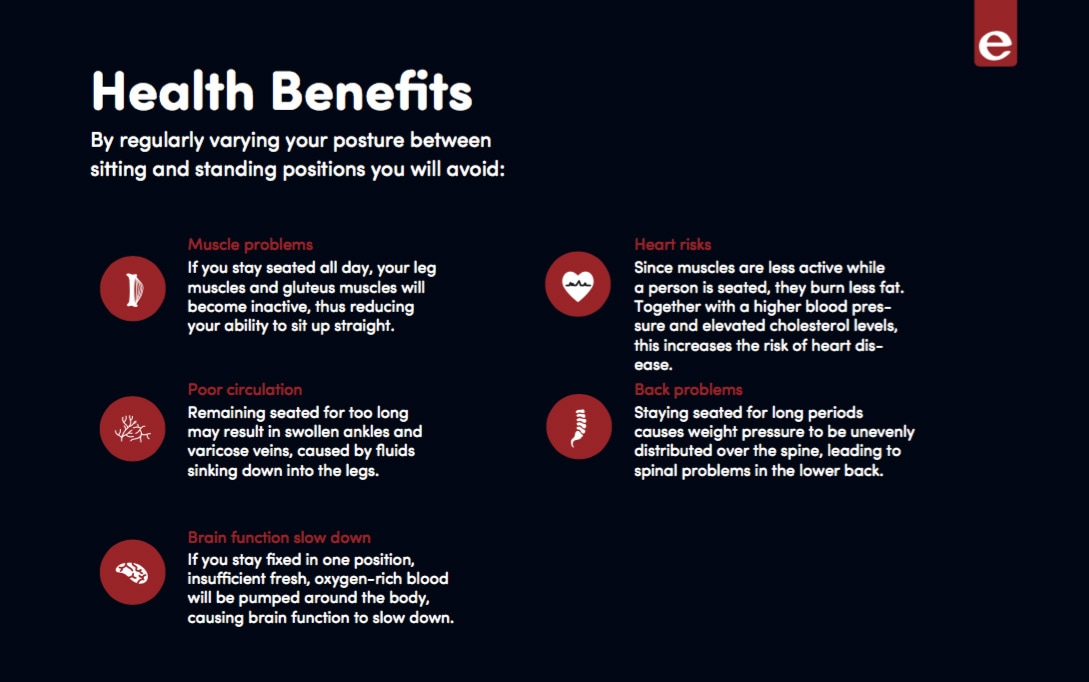Why use Sit Stand Desks
Sitting for long periods of the workday can have lasting
and harmful effects on the posture and overall health of
workers. We therefore set out to create a more dynamic
workstation that gives users the ability to easily work
both sitting or standing.
The result was ONE+ SIT STAND, a design to
compliment the evolving way we interact with the
workplace. This automatic, height-adjustable desking
system is modern, functional and affordable.
The Washington State Department of Labour & Industries conducted major analysis of workplace case studies and they,
along with many other industry researchers have reported dramaAc decreases in claims of repeAAve strain related illnesses
and absenteeism ranging from 25% to 100% in workplaces with sit-stand desks. Overall, the WSDLI study highlights the
importance of changing the ergonomics of a workstaAon. In most cases the ability to adjust the height showed an increase
in producAvity by more than 12%, with other similar studies showing an 18% increase.
What if, for a moment, we assume all of this research is incorrect, and a producAvity increase of 2.5% is reported. This
would mean that on a salary as low as €28,000, an iniAal investment of €700 would be paid back in ONE year, not
accounAng for the benefits to the well being of staff and dramaAc reducAon in absenteeism.
Also, more and more, experts and medical agencies are reporAng that increasing movement in the workplace for longer
periods of Ame is vital for the reducAon of sedentary lifestyle related illnesses such as heart disease and obesity.
and harmful effects on the posture and overall health of
workers. We therefore set out to create a more dynamic
workstation that gives users the ability to easily work
both sitting or standing.
The result was ONE+ SIT STAND, a design to
compliment the evolving way we interact with the
workplace. This automatic, height-adjustable desking
system is modern, functional and affordable.
The Washington State Department of Labour & Industries conducted major analysis of workplace case studies and they,
along with many other industry researchers have reported dramaAc decreases in claims of repeAAve strain related illnesses
and absenteeism ranging from 25% to 100% in workplaces with sit-stand desks. Overall, the WSDLI study highlights the
importance of changing the ergonomics of a workstaAon. In most cases the ability to adjust the height showed an increase
in producAvity by more than 12%, with other similar studies showing an 18% increase.
What if, for a moment, we assume all of this research is incorrect, and a producAvity increase of 2.5% is reported. This
would mean that on a salary as low as €28,000, an iniAal investment of €700 would be paid back in ONE year, not
accounAng for the benefits to the well being of staff and dramaAc reducAon in absenteeism.
Also, more and more, experts and medical agencies are reporAng that increasing movement in the workplace for longer
periods of Ame is vital for the reducAon of sedentary lifestyle related illnesses such as heart disease and obesity.


